With just over four months to go until the 2023 Women's World Cup kicks off, FIFA has revealed the collection of official posters created for the July 20-Aug. 20 tournament and its nine host cities across Australia and New Zealand.
Each artwork dazzles with bright, colourful hues and patterns, while each city has been furnished with a bespoke design that celebrates landmarks, flora and fauna unique to their individual locale.
From Adelaide in Australia to Wellington in New Zealand, each poster is intended to demonstrate the host city's distinctive identity as well as bringing them all together under the banner of sporting unity and a shared love of football.
- Stream on ESPN+: LaLiga, Bundesliga, more (U.S.)
Official tournament poster
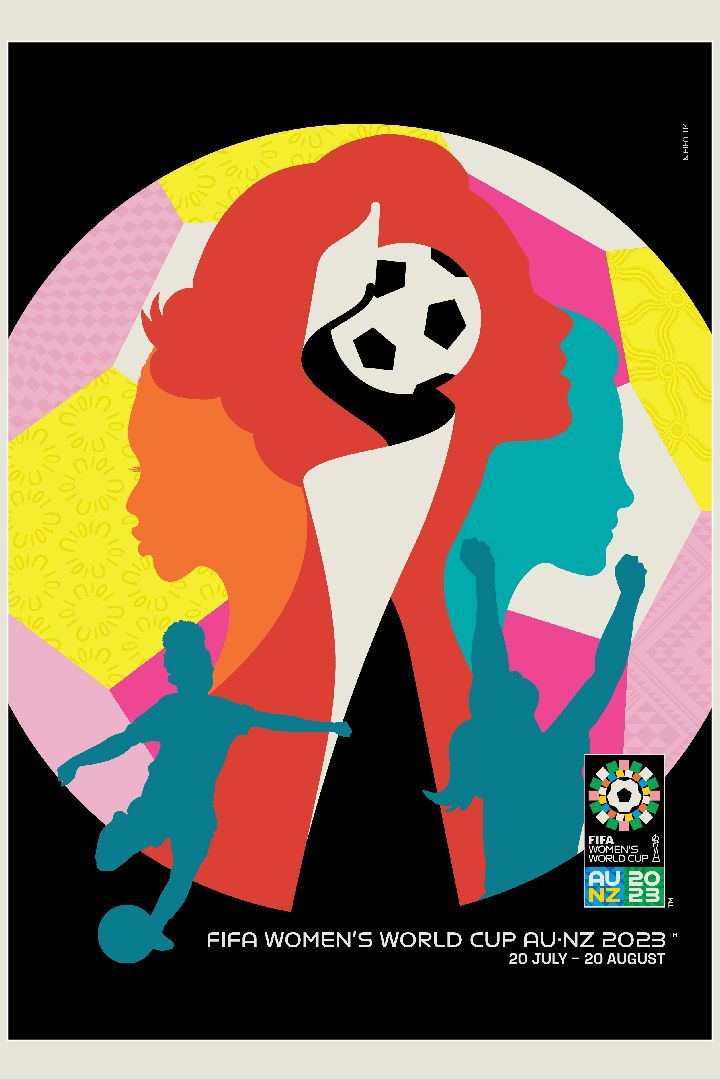
Setting the tone for the rest of the artworks, the main poster for the Women's World Cup features a trio of female silhouettes with a multi-coloured soccer ball in the background. The trophy for which 32 teams from all six FIFA confederations will be competing is front and centre.
Adelaide/Tarntanya (Australia)
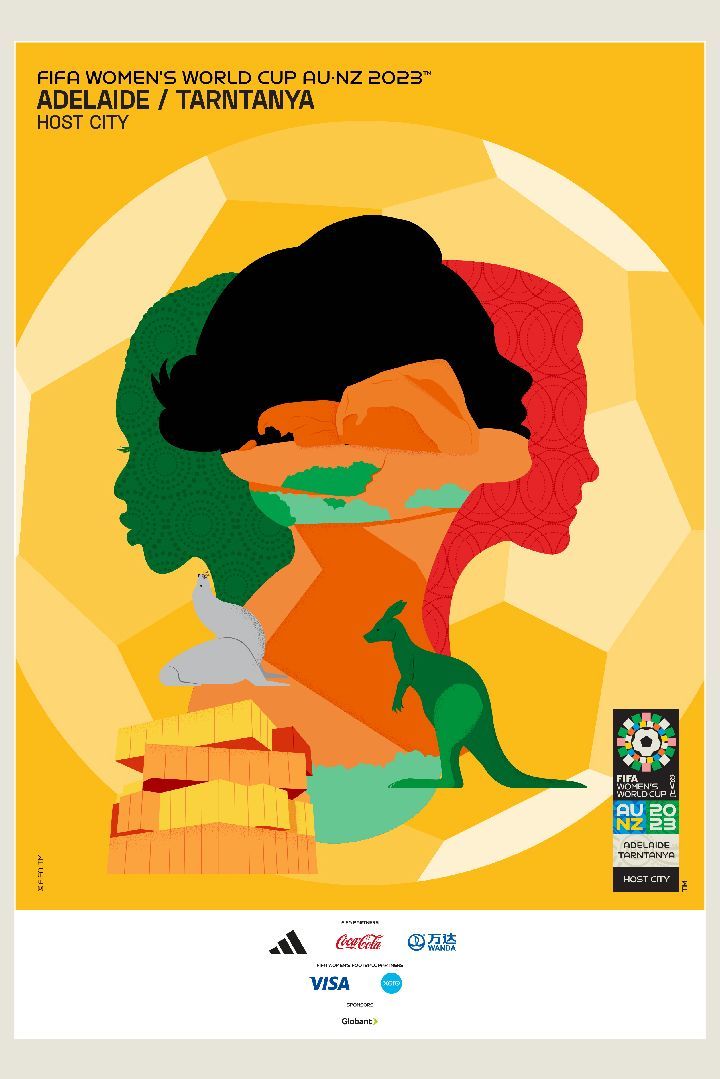
On a bed of warm yellow, this poster features a sea lion and kangaroo as well as the aptly named Remarkable Rocks -- the curious looming, hollowed-out granite rock formations found in Flinders Chase national park on Kangaroo Island, situated around 60 miles off the coast. The structure in the bottom corner is an image of the d'Arenberg Cube building, which overlooks the vineyards in the town of McLaren Vale just outside the city.
Auckland/Tamaki Makaurau (New Zealand)

Central to this poster is the 1,076-feet tall Sky Tower, which is the tallest structure in the entire southern hemisphere and emblematic of the city's ever-changing skyline. Alongside the tower is the Auckland Harbour Bridge as well as an array of plants and animals central to Maori culture -- the tui songbird, the red bell-shaped flowers of the pohutukawa tree, and also the bottlenose dolphins found in the waters around Rangitoto Island.
Brisbane/Meaanjin (Australia)

The capital and largest city in the north-eastern state of Queensland, its sunny climate and blue skies are reflected in the poster design which also features an iconic staple of the Australian wildlife world -- the koala. The Brisbane River also meanders through the image as canoeists paddle beneath the heritage-listed Story Bridge, the longest cantilever bridge in Australia.
Dunedin/Otepoti (New Zealand)
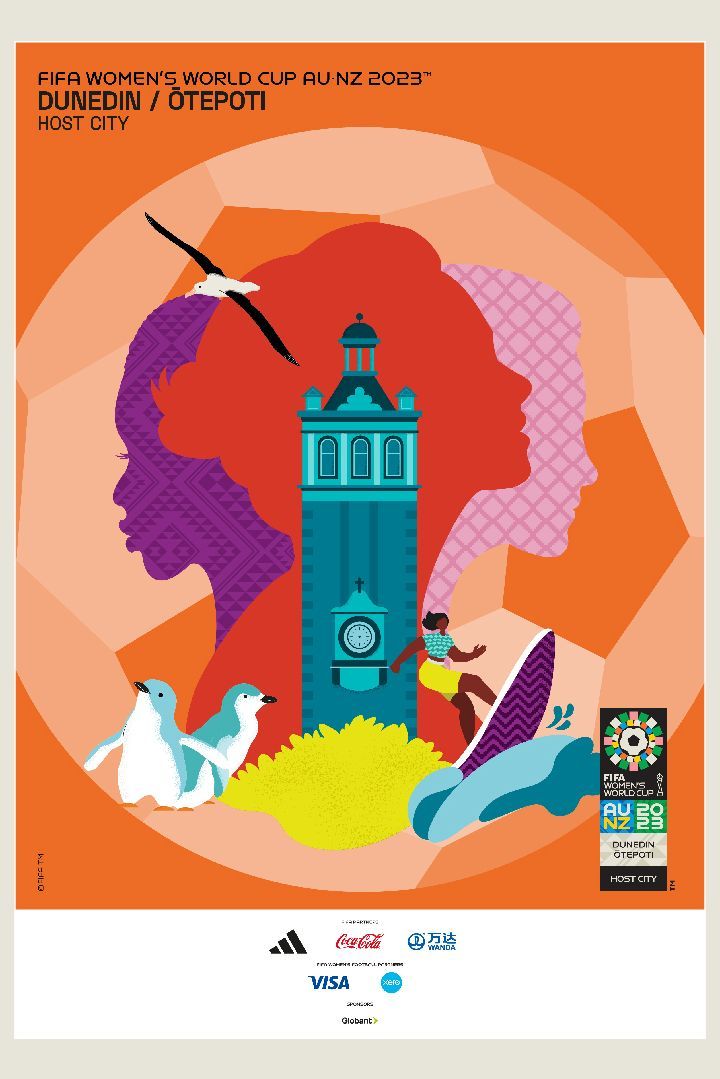
The central spire in this poster is that of the city's railway station, which features Edwardian architecture dating back to the early 1900s. The local wildlife is represented by the blue penguins and the royal albatross.
Hamilton/Kirikiriroa (New Zealand)

The Waikato River flows through the heart of this poster just as it does through the heart of the city. The Fairfield Bridge is one of the six bridges that span the waterway as a traditional waka canoe passes beneath. The three carved figures at the top of the image are to be found above the gateway to the Waikato Stadium, which will be used to host matches at the World Cup, while the city's world-famous hot air balloon festival is also given a visual nod.
Melbourne/Naarm (Australia)
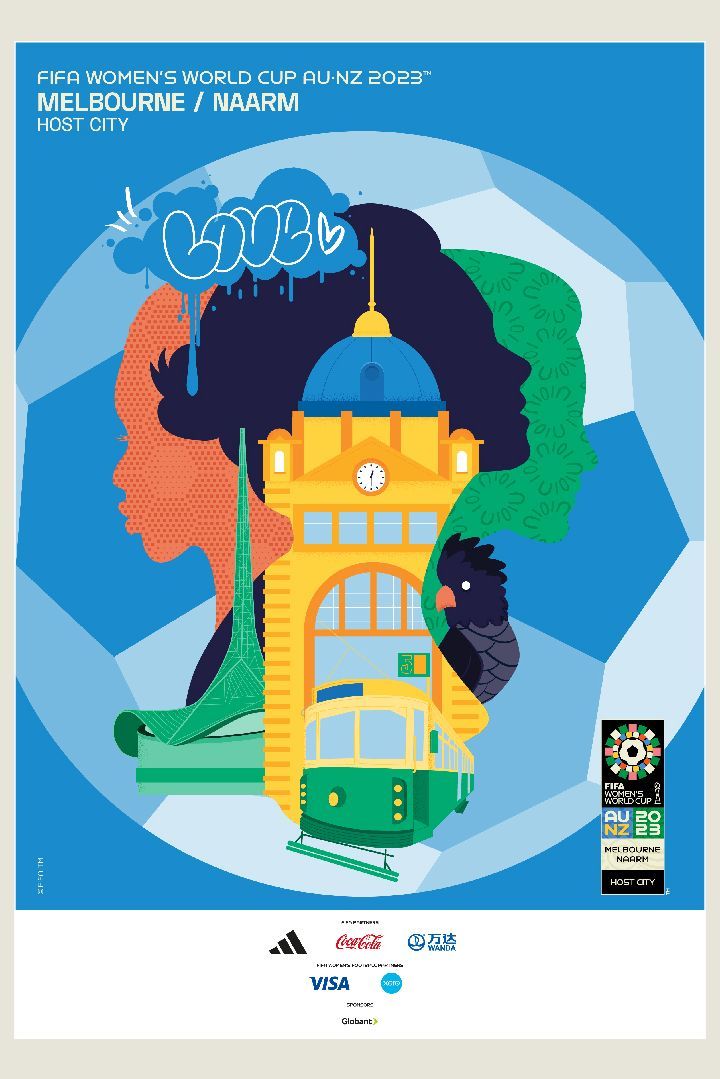
The vivid gold and green clock tower of Flinders Street Station is used to provide the central focus of the design while a tram runs along in the foreground. The needle-like pointed roof on the left can be found atop the Melbourne Arts Centre while the galah cockatoo, a native Australian bird found in abundance in the state of Victoria, peers out from an overhanging tree canopy.
Perth/Boorloo (Australia)
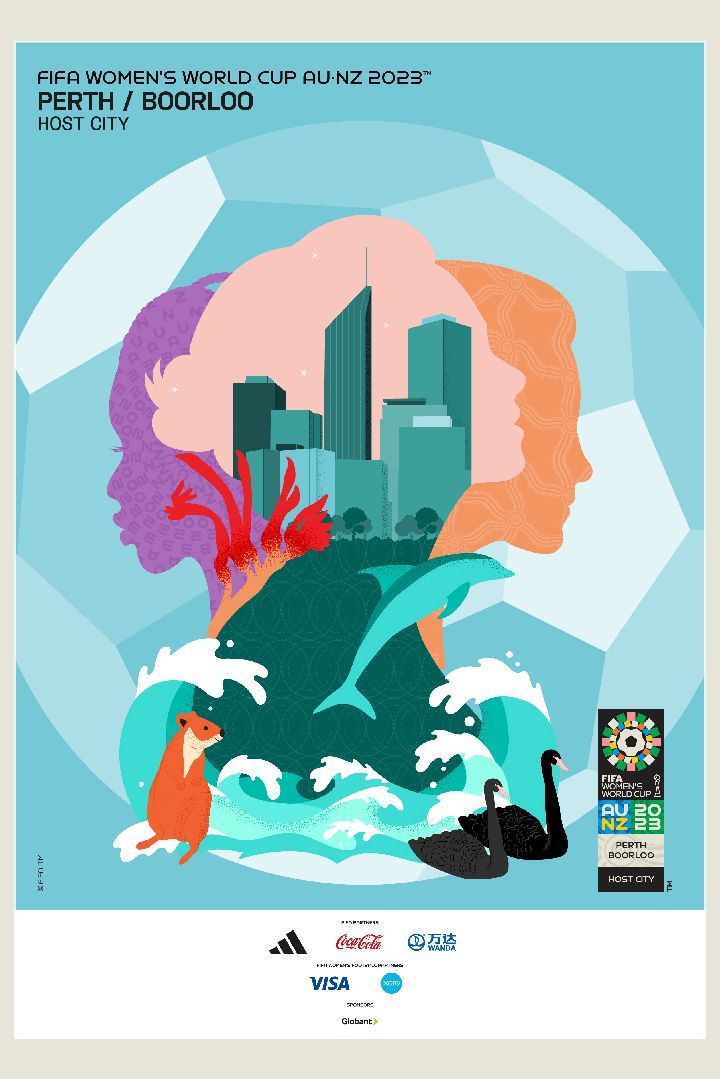
Situated on the west coast of Australia, this city is characterised by its proximity to the Indian Ocean, hence the blue dolphin seen leaping above the crashing surf. Found on Rottnest Island, the quokka is a native mammal known as the "happiest marsupial in the world" due to its gentle demeanour. The eponymous birds found on Swan River have a place amid the design as does Kings Park, which is one of the world's largest inner-city parks. The spiny red branch on the left is an image of the kangaroo paw, an endemic red and green plant that has become a symbol of Western Australia.
Sydney/Gadigal (Australia)

The iconic skyline takes centre-stage, with the Sydney Harbour Bridge spanning the bay above the famous shell roof of the Sydney Opera House. A vibrant red warratah bloom sits alongside an image of the Three Sisters; an ancient rock formation found in the Blue Mountains to the west of the city.
Wellington/Te Whangan (New Zealand)
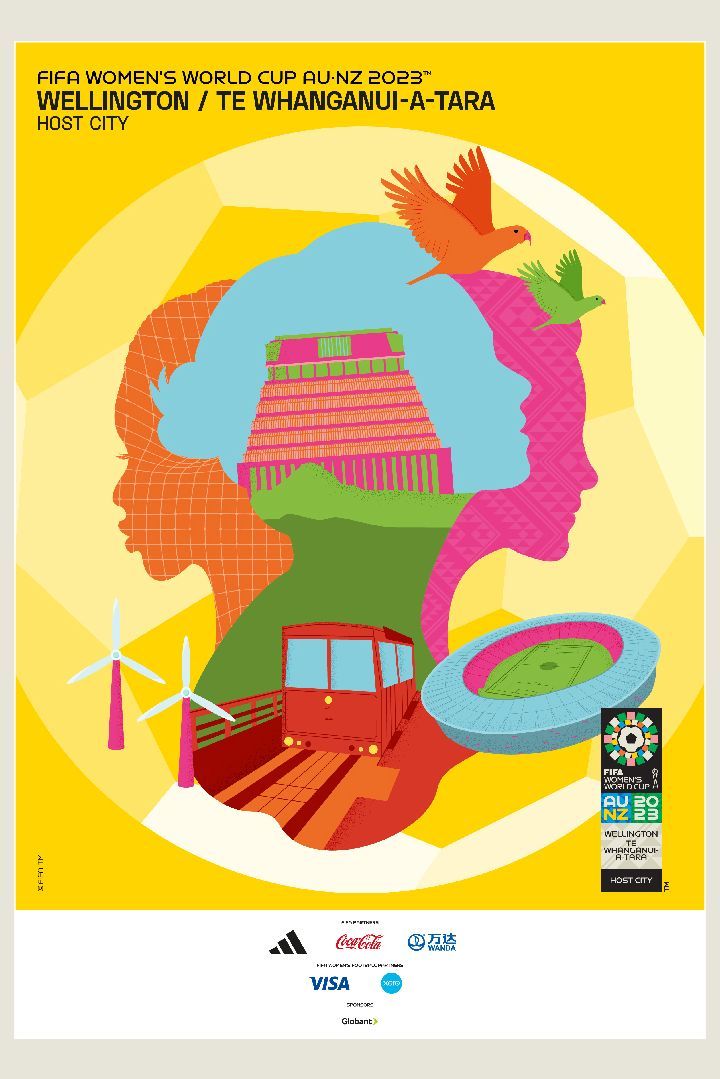
Kea parrots take flight above a light and airy design that is inspired by the biodiversity of the area and particularly the Zealandia Te Mara a Tane -- the giant urban ecosanctuary found in the heart of the city. The bright red cable cars that run on the old funicular railway pass between the city's wind turbines and the Regional Stadium, which will host matches at the World Cup.
